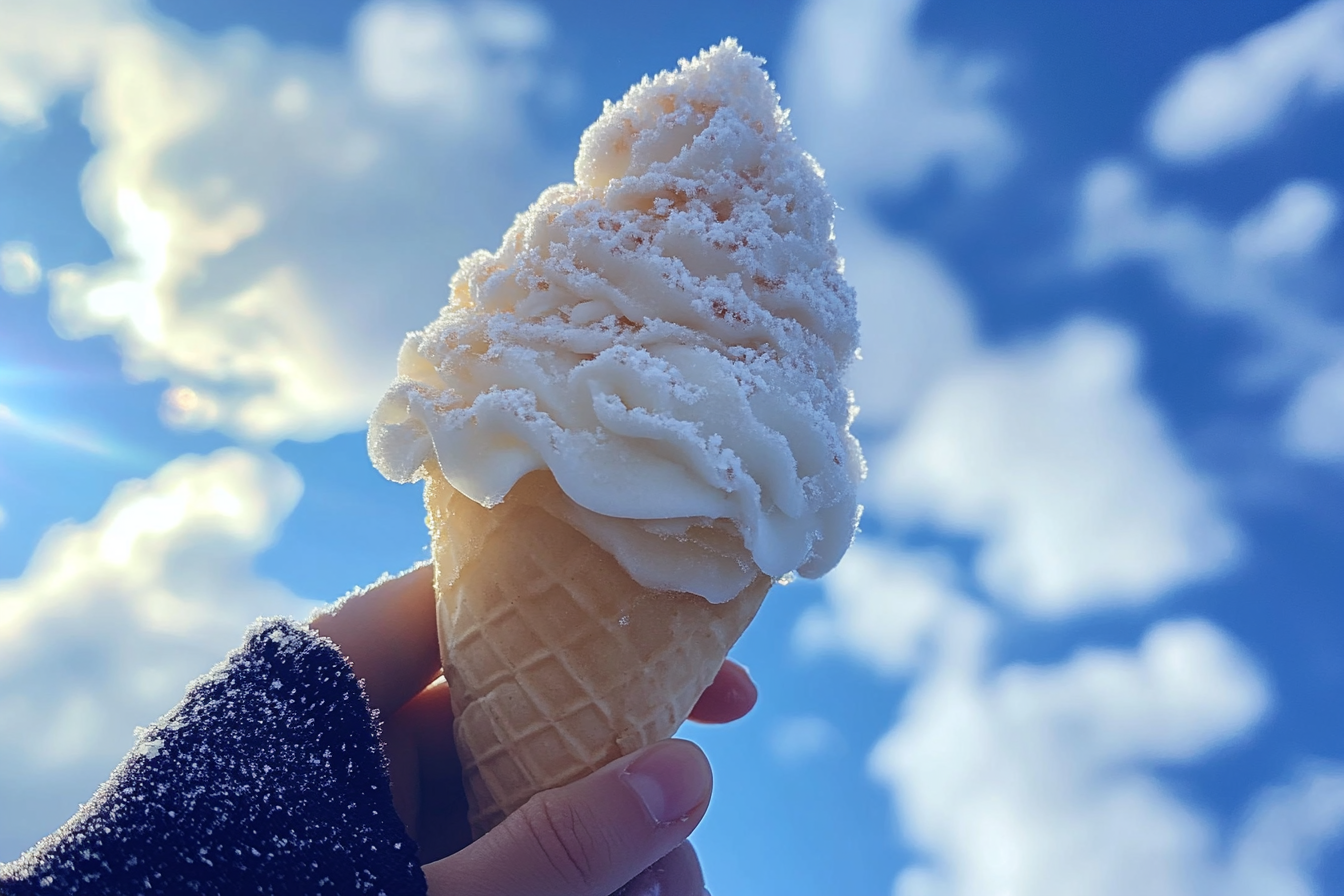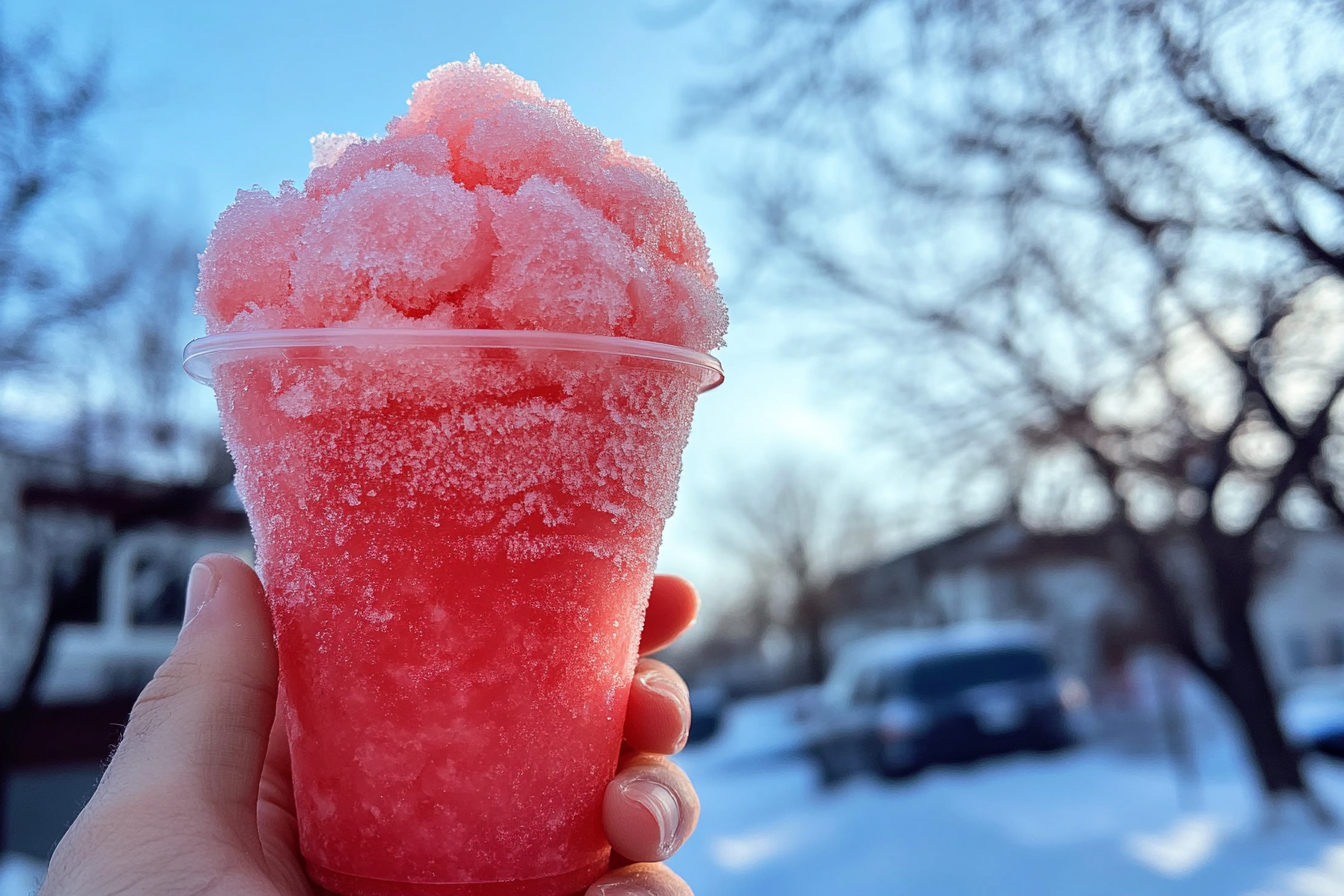What do Americans call snow cones? Snow cones have long been a favorite summer treat across the United States. Known for their bright colors, sweet syrups, and crushed ice, snow cones are not just refreshing but deeply nostalgic for many. Yet, depending on where you are in the U.S., snow cones might go by different names, and their preparation might even vary slightly.
This article explores the rich history, cultural significance, and regional names for snow cones, examining why this simple frozen treat remains such an integral part of American summers.
The Origins of Snow Cones
The history of snow cones is layered with tradition, just like the flavors that sweeten the ice. Though people have been flavoring snow and ice with fruit juices for centuries, the modern snow cone originated in the United States. In the 1800s, workers in the northeastern U.S. would shave ice from large blocks and sell it, flavored with syrups, as a refreshing snack.
However, the true birth of the modern snow cone can be traced back to 1919 when Samuel Bert invented the first snow cone machine. He debuted it at the Texas State Fair, revolutionizing how snow cones were produced. With his invention, vendors could now serve these icy delights quickly, making them more accessible at fairs, circuses, and carnivals across the country.
Snow cones grew rapidly in popularity, eventually taking on various forms and names depending on the region. Their appeal wasn’t just limited to taste; snow cones became a staple of American summer culture, offering refreshment during long, hot days.
For more on how similar frozen treats emerged, check out the history of creamsicles, another iconic summer dessert.
Regional Variations: The Many Names of Snow Cones
While “snow cone” is the most commonly used term in much of the U.S., different regions have their own names and variations for this icy treat. Let’s explore the most popular regional terms and the unique twists each one brings to the classic snow cone.
1. Snow Cone (Midwest and West Coast)
The term snow cone is widely recognized across much of the Midwest and West Coast. These snow cones are typically crunchy, with flavored syrup poured over a mound of crushed ice. As the ice melts, the syrup seeps through, slowly flavoring the whole cone.
2. Snowball (New Orleans and Southern States)
In New Orleans and other parts of the South, the snow cone takes on a softer form and is known as a snowball. These are made with finely shaved ice, creating a soft, fluffy texture that absorbs the syrup more thoroughly. New Orleans snowballs often feature decadent toppings like sweetened condensed milk, marshmallow fluff, or even ice cream. Many snowball stands in New Orleans are run by families who have passed down their recipes and techniques for generations.
3. Hawaiian Shave Ice (Hawaii)
Hawaiian shave ice (notice the omission of the “d” in shaved) is another popular variation. In Hawaii, vendors use finely shaved ice, which gives the treat a smooth, melt in your mouth texture. Syrups for shave ice are often tropical and include flavors like mango, pineapple, and coconut. It’s also common to find Hawaiian shave ice served with a scoop of ice cream or sweet red beans at the bottom of the cup.
4. Raspados (Mexican-American Communities)
In many Mexican-American communities across the U.S., particularly in states like Texas, Arizona, and California, snow cones are known as raspados. These treats are similar to New Orleans snowballs, featuring finely shaved ice, but the syrups are often fruit-based and made from fresh ingredients. Raspados can also be topped with fruit, chili powder, or chamoy, giving them a sweet and spicy twist.
5. Slushies and Other Regional Names
Some regions refer to snow cones by different names, such as slushies or slush puppies. Slushies typically involve blending the ice and syrup together to create a smoother, drinkable texture. They are often found at gas stations and convenience stores and are especially popular with children.
For more on regional frozen treats, read about the comparison between shaved ice and snow cones.
Snow Cones vs. Other Frozen Treats
Snow cones, while beloved, are not the only frozen treat vying for attention in the U.S. Let’s explore how snow cones stack up against other popular icy desserts.
1. Snow Cones
Snow cones feature coarser ice, giving them a satisfying crunch. Vendors typically pour syrup over the ice, leaving the inside relatively flavorless until the syrup seeps in as the ice melts. This gradual flavor release creates an enjoyable contrast between the ice and the syrup.
2. Shave Ice
Hawaiian shave ice, by contrast, has a much softer texture due to the way the ice is shaved. The syrup soaks more evenly into the ice, creating a consistent flavor throughout. This makes shave ice a smoother and more indulgent treat, perfect for those who prefer their frozen desserts less crunchy.
3. Slushies and Icees
Slushies and Icees, often sold in convenience stores, offer a completely different experience. These treats blend the ice and syrup together from the start, creating a smooth, drinkable texture. Slushies can be consumed with a straw, while snow cones and shave ice are eaten with a spoon.
4. Italian Ice and Sorbet
Though not as common in the U.S., Italian ice and sorbet are worth mentioning. Italian ice is made from fruit juice or syrup mixed with finely ground ice, producing a smooth, icy dessert. Sorbet is similar but usually has a creamier texture due to the inclusion of more fruit and sugar.
Shave ice is a softer version of the snow cone, but many types of shaved ice exist around the world, each with its unique twist.
Popular Flavors and Toppings for Snow Cones
The vast array of flavor options is one of the reasons snow cones have remained so popular. From traditional flavors to gourmet innovations, there is a snow cone for every palate.
1. Classic Flavors
Some flavors have become synonymous with snow cones and continue to dominate the market:
- Cherry: Bright red and boldly sweet, this is a classic.
- Blue Raspberry: Vibrant blue and tangy, a favorite among kids.
- Grape: A deep, fruity flavor.
- Lemon-Lime: Zesty and refreshing, perfect for hot summer days.
2. Modern and Unique Flavors
As the food industry has embraced more gourmet and artisanal approaches, snow cone flavors have expanded to include unique and unexpected options. You might find flavors like:
- Lavender: Light and floral, offering a sophisticated twist.
- Mango: Sweet and tangy, with a tropical flair.
- Passionfruit: A bold, tart option for adventurous eaters.
- Coconut: Creamy and smooth, perfect when paired with fruit flavors.
3. Toppings and Mix-Ins
Toppings have also evolved, with many vendors offering creative ways to personalize your snow cone. Some of the most popular options include:
- Sweetened Condensed Milk: Common in New Orleans snowballs, this adds a creamy richness.
- Fresh Fruit: Popular in raspados, fresh fruit like mango, pineapple, or strawberries provides a refreshing contrast to the syrup.
- Candy and Sprinkles: Perfect for those with a sweet tooth, candy sprinkles or gummies can be mixed into the snow cone.
If you enjoy experimenting with fruit, you might also enjoy creating a fruit platter to pair with your snow cone.
The Cultural Significance of Snow Cones
Snow cones have more than just flavor appeal; they hold a special place in American culture. In many communities, snow cones symbolize childhood summers, local fairs, and community gatherings. Let’s explore some of the reasons snow cones remain so culturally significant.
1. Small Business Success Stories
Across the country, many snow cone stands are small, family-owned businesses. In New Orleans, for instance, snowball stands are neighborhood fixtures, with some having been passed down for generations. These businesses offer more than just a tasty treat they provide a sense of community and tradition, especially during the hot summer months.
2. Snow Cones in Pop Culture
Snow cones have also made their way into American pop culture, often appearing in movies, TV shows, and music. Whether they serve as a symbol of youth, summer, or nostalgia, snow cones are frequently featured in scenes depicting childhood memories or leisurely summer afternoons.
3. A Staple of Summer Events
Snow cones are a staple at summer fairs, festivals, and outdoor events. Their portability and refreshing nature make them the perfect snack for hot days. For many people, summer doesn’t feel complete without at least one snow cone enjoyed at a local fair or sporting event.
The Rise of Artisanal and Gourmet Snow Cones
As with many traditional foods, snow cones have evolved in recent years, thanks in part to the artisan food movement. Once considered a simple treat sold at fairs, snow cones have now found their way into high-end markets.
1. Artisanal Syrups
One of the key elements of the gourmet snow cone trend is the use of homemade syrups made from natural ingredients. Vendors are now using fresh fruit, herbs, and organic sugar to create unique and sophisticated flavor profiles. You might find snow cones flavored with real lavender, ginger, or cucumber at artisanal stands.
2. Creative Toppings
Toppings have also become more inventive, with options like local honey, candied ginger, and exotic spices elevating the traditional snow cone. These creative toppings appeal to foodies looking for something beyond the basic snow cone.
How to Make Snow Cones at Home
Making snow cones at home is a fun and easy way to enjoy this classic treat without leaving your house. You don’t need much equipment, and the possibilities for flavor combinations are endless.
What You’ll Need:
- Ice Shaver or Blender: To crush the ice.
- Syrups: You can buy pre-made syrups or make your own with fruit juice, sugar, and water.
- Snow Cone Cups or Bowls: For serving.
- Toppings: Consider fresh fruit, condensed milk, or sprinkles.
Instructions:
- Shave the Ice: Use an ice shaver or blender to crush the ice. For a crunchier snow cone, leave the ice coarser. For a New Orleans-style snowball, shave it finely.
- Pack the Ice: Scoop the ice into a cup or bowl, pressing it down to create a firm base.
- Add Syrup: Pour your syrup over the ice, letting it soak through.
- Top with Extras: Add any toppings you like, whether it’s fruit, candy, or a drizzle of condensed milk.
With just a few simple steps, you can recreate the magic of a summer snow cone at home.
FAQs About Snow Cones
1. What is the difference between snow cones and shaved ice?
Snow cones use crushed ice, which gives them a crunchy texture, while shaved ice has a softer, fluffier texture.
2. Why are snowballs so popular in New Orleans?
New Orleans snowballs are famous for their fine, fluffy texture and rich syrups. Many stands have been around for generations, adding to their cultural significance.
3. What are the most popular snow cone flavors?
Popular flavors include cherry, blue raspberry, grape, and more modern options like lavender and coconut.
4. Can I make snow cones at home?
Yes, with an ice shaver or blender and flavored syrups, you can easily make snow cones at home.
Conclusion
Snow cones have a special place in the hearts of many Americans. Whether you prefer the classic crunchy snow cone, a soft New Orleans snowball, or a tropical Hawaiian shave ice, these frozen treats are more than just a way to cool down they are a symbol of summer, tradition, and fun. As snow cones continue to evolve with gourmet flavors and artisanal techniques, they will likely remain a popular summer treat for generations to come.
For more summer dessert ideas, check out the perfect pairing with a fruit platter or explore unique frozen treats like creamsicles.



